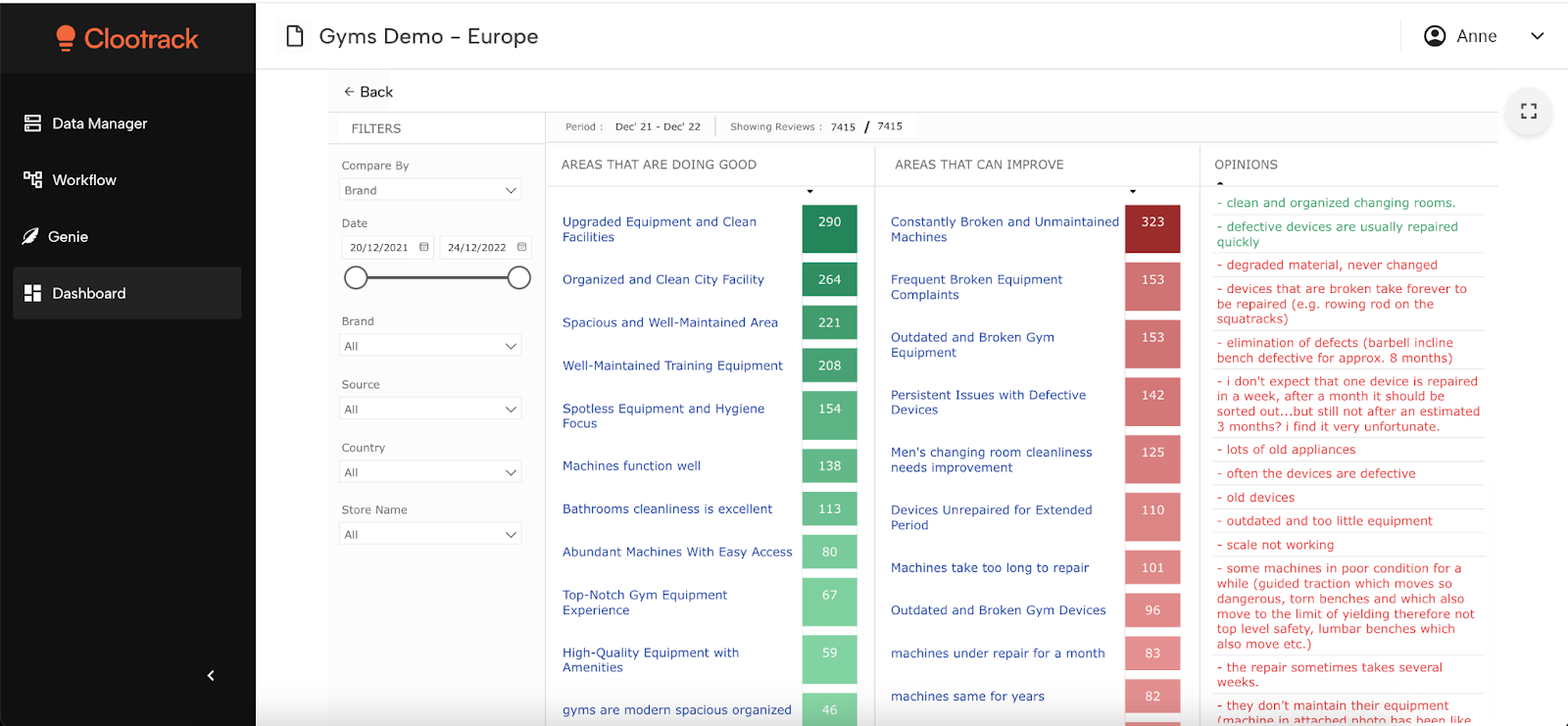🎉 Clootrack recognized by OpenAI for crossing 100 billion tokens in Voice of the Customer analytics →
Read the story
read

August 4, 2025

The silent majority, customers who never respond to surveys, now represents the biggest blind spot in customer feedback, unstructured data analysis, and experience analytics.
As the low survey response rate crisis deepens, CX and insights leaders are left making decisions based on a shrinking and often biased subset of customer voices. The issue isn’t just reduced visibility but a loss of accuracy. When only the most vocal customers are heard, experience strategies tend to favor outliers, not the broader customer base.
Meanwhile, valuable input from passive users, quiet churners, and disengaged segments gets overlooked, not because it doesn’t exist, but because it isn’t explicitly expressed through traditional feedback channels. These signals often live in formats like support logs, transcripts, and behavioral data, rarely structured, rarely tagged, and almost never prioritized.
For CX, insights, and product teams, the challenge is no longer about collecting more responses. It’s about uncovering what’s already being said in less obvious, less structured ways and turning that into insight.
In most organizations, a large portion of customers go through their entire journey without ever submitting feedback. They skip surveys, close emails, and never respond to NPS prompts. This segment, known as the silent majority, includes non-respondents, passive users, and quiet churners whose experiences are rarely documented in structured formats. Because these customers rarely engage with traditional customer feedback systems, their experience data often goes untracked.
What makes this group especially important is not just their silence, but the fact that they often represent systemic CX failures that never trigger alarms. These are customers who:
Because most CX systems rely on direct response to capture feedback, these individuals are filtered out of the analysis entirely. Yet patterns like behavioral drop-offs, repeated unresolved actions, or short, low-context support interactions often signal dissatisfaction in real time.
When this feedback is missed, churn becomes harder to predict, and friction remains unaddressed. CX and insights leaders must learn to build more comprehensive customer feedback analytics practices that interpret indirect, behavioral cues as legitimate customer signals, especially from those who never say a word.
Despite advances in customer feedback systems, most Voice of Customer (VoC) platforms are still designed around structured inputs, survey scores, tagged comments, and form-based responses. These systems work well for analyzing what customers explicitly say. But they fall short when it comes to capturing the implicit signals left by the silent majority.
Unstructured data, such as chat transcripts, email threads, support tickets, product reviews, and in-app conversations, carries rich contextual feedback. But because this data doesn’t follow a standard format, most platforms either ignore it, rely on keyword-matching models, or require manual tagging. As a result, insights from passive users often remain hidden, delayed, or distorted by sampling bias.
Even tools that claim to be AI-powered often operate within the limits of predefined rules or sentiment libraries. This means they detect only what the team already expects to find. Silent churn drivers, emerging pain points, or journey-stage friction often go unnoticed simply because the system wasn’t configured to look for them.
To detect early warning signals from non-respondents and passive segments, organizations need an AI-powered VoC platform that can process unstructured feedback at scale, without relying on templates or manual setup. Without this capability, teams continue to operate with a partial view of reality, reacting to only the loudest voices while missing the ones that quietly walk away.
The most accurate and actionable customer signals often don’t come through surveys—they’re buried in unstructured customer feedback like transcripts, reviews, support tickets, and chat logs. But historically, teams have struggled to analyze it at scale. Manual tagging and keyword rules can’t keep up with the volume or complexity of this data.
Unsupervised AI changes that. Unlike traditional VoC systems that rely on predefined taxonomies, unsupervised models can detect emerging themes, emotional drivers, and behavioral red flags across thousands of conversations, without setup, scripting, or guesswork. This allows teams to surface insights from customers who never leave structured responses but leave valuable signals in how they interact.

Clootrack’s unsupervised engine is built for this exact challenge. It analyzes raw, unstructured feedback from over 1,000 sources to detect themes with 96.5% accuracy and sentiment with 98% accuracy, without any manual configuration. That means faster insights, earlier intervention, and fewer blind spots in the customer journey.
By tapping into these overlooked signals with the right AI models, brands can finally move beyond asking for feedback and start building a system that listens, learns, and acts even when customers stay silent. The next step is operationalizing that insight.
AI can now extract meaningful patterns from passive signals, but the insights only drive action if your system is built to operationalize them. Most CX programs still depend on reactive feedback loops triggered by surveys or rating prompts. When customers don’t respond, their signals remain scattered across systems and ignored in decision-making.
To close this gap, leaders need a new, proactive operating model, one that makes unspoken feedback visible, contextualized, and aligned to business priorities. The following framework enables organizations to uncover and act on hidden insights at scale.
Unify the VoC data from free-form feedback channels like chat histories, service logs, support threads, app store commentary, and online communities. These channels capture urgency, confusion, and dissatisfaction without being tied to a formal request. Without this unification, patterns remain fragmented and hard to act on.

Apply AI models to extract recurring pain points, intensity of sentiment, and root-level experience issues directly from raw language. Avoid solutions that depend on manually defined tags, taxonomies, or keyword lists. This unlocks insights leaders don’t already know to look for, and flags emerging issues before they escalate.

Disaggregating passive feedback by user type, geography, or experience stage reveals where pain points concentrate. It’s the difference between knowing that “delivery delays” exist and knowing that they affect first-time users in one region. Only with this segmentation can insights drive precise action.
Not all feedback carries the same urgency. Prioritize themes tied to churn indicators, emotional triggers, or feature confusion. Unsupervised analysis helps flag which patterns are growing in intensity or frequency, so teams focus on the signals that matter most for retention and satisfaction.
Highly customizable consumer insights are crucial for driving action that aligns with how each team operates, prioritizes, and delivers impact. CX leaders need operational breakdowns of service friction. Product teams want to identify usability issues by feature or flow. Support managers care about volume drivers and agent blind spots. Deliver insight in team-specific formats to drive faster execution and accountability.
Silence is not satisfaction. When customers stop responding, they are not opting out of the experience; they are opting out of your feedback loop. And in today’s environment, that silence often holds more truth than any survey score.
Traditional voice of customer programs were designed to ask questions and wait for answers. But the most valuable insights now live in what is left unsaid—tension buried in support logs, overlooked expectations in digital journeys, and confusion hinted at in offhand comments. Acting on these signals requires a shift from reactive measurement to proactive discovery.
The future of customer intelligence is not about collecting more feedback. It is about recognizing that feedback is already happening, all the time, in places most brands ignore. When leaders stop waiting and start listening differently, they unlock a new era of truth and a new standard for customer experience.
👉 Ready to hear from the silent majority? Request a personalized demo and see Clootrack in action.
The silent majority refers to customers who do not respond to surveys or provide structured feedback, yet interact with your brand across digital and service channels. Their behaviors, like abandoned sessions, minimal app engagement, or low-effort support interactions, often signal dissatisfaction, confusion, or churn risk. These early signals are essential for CX leaders looking to act before issues escalate.
Traditional VoC platforms prioritize structured inputs like ratings, NPS, and form-based responses. This creates a feedback blind spot by ignoring unstructured data sources such as call logs, chat transcripts, helpdesk notes, and behavioral analytics. As a result, silent signals go undetected, leaving teams to react only after problems surface publicly.
AI, especially unsupervised models, analyzes unstructured data at scale to detect recurring themes, emotional tone, and hidden friction points without requiring predefined tags. It reveals patterns in the language and behavior of passive customers, helping teams take action even when no formal feedback is submitted.
Key sources include support tickets, live chat logs, call transcripts, online reviews, in-app behavior, community forums, and helpdesk email threads. When aggregated and analyzed through AI, these channels expose gaps in the experience that are otherwise invisible in survey data.
Not entirely. Surveys still play a role in collecting explicit, structured feedback. But when response rates are low, AI-powered VoC fills the gaps by analyzing what customers express indirectly. This hybrid approach delivers a fuller, faster, and more representative picture of customer sentiment across the journey.
Analyze customer reviews and automate market research with the fastest AI-powered customer intelligence tool.
